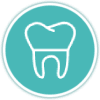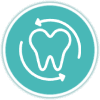Is Nitrous Oxide (Laughing Gas) Safe For Toddlers and Children?
How Does Nitrous Oxide Work?
Nitrous oxide, also called laughing gas, is commonly used by the pediatric dentist, as it helps anxious patients relax and feel comfortable during a dental procedure. Nitrous oxide is a colorless, odorless gas commonly referred to as “laughing gas.” It consists of two nitrogen atoms and one oxygen atom bonded together. Studies indicate that it reduces a patient’s perception of pain and increases the release of dopamine.
In 1772, Joseph Priestly first isolated the compound nitrous oxide. It wasn’t until 1799 that Humphry Davy discovered the relaxing, euphoria-inducing effects that earned it the name laughing gas. Several decades later, in the 1860s in Germany, nitrous oxide found its place in dentistry, and we still use it today.
Is Laughing Gas Safe For My Child?
The nitrous oxide used in a medical setting such as pediatric dentistry is very safe, because exposure is carefully controlled, even for toddlers and young children. The masks pediatric dentists use to administer the gas first deliver pure oxygen, followed by a mixture of oxygen and nitrous oxide. The limited exposure produces temporary effects that reduce pain and help the patient relax during a procedure.
In rare cases, it may cause side effects like headaches, shivering, sweating, nausea, or fatigue. As soon as the procedure is complete, a child breathes 100% oxygen through the mask, to clear the nitrous oxide from their system.
Your Pediatric Dentist Can Answer All Your Laughing Gas Questions
If you’d like to know more about the effects of laughing gas and its uses in pediatric dentistry, we are happy to answer your questions! Give us a call or send us an email to schedule an appointment so that we can discuss this and any other dental health concerns you may have. Check out our about us page to learn more about our great pediatric dentists too!









